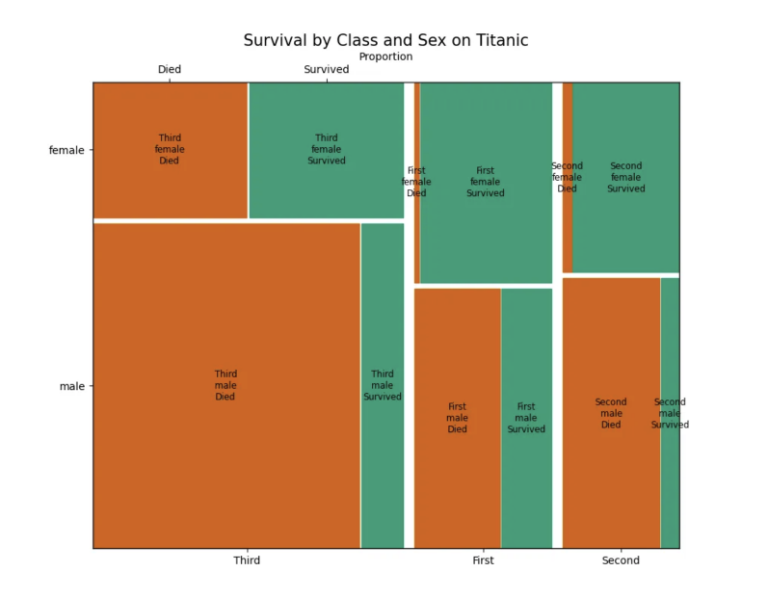Who has low or high predicted probabilities?
It can also be valuable to flip the question about distribution of predicted probabilities. That is, in addition to asking how predicted probabilities are distributed within and across groups, we can look at what groups are most or least represented within categories of predicted probabilities.
For example, we might ask: Who has a high predicted risk of dropping out of high school (e.g., those with predicted probabilities greater than 75%)? If we find that many of the students who are high-risk have high absenteeism or low scores on reading tests, this may suggest areas of focus for designing interventions to help these students. Note, at the same time, we need to be careful not to assume that student characteristics that are prevalent among high-risk students do not indicate a causal relationship.
Again, data visualizations may helpful. Here is an example of a “mosaic plot,” which allows us to look at multiple characteristics at the same time. This was created for the Titantic data set on Kaggle. It was produced to understand who actually died or survived, but the same plot could be created for those predicted to die or survive. And a similar plot could be created to look at students predicted to have high risk of dropping out or not.
